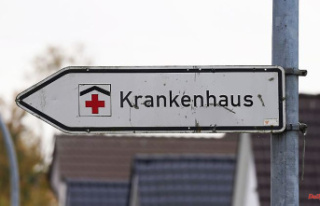Public charging stations are - still - scarce and often occupied. If you own an electric car, your own wall box is the most convenient and usually cheapest way to charge it. But by no means the only one. What alternatives are there?
Question: I want to buy an electric car. Do I absolutely need my own wall box?
Answer from Thomas Schuster, motor vehicle expert at the expert organization KÜS: There are many ways to charge an e-car. In most cases, your own wall box or a universal charging cable connected to a high-voltage socket are probably the most practical, since recharging can be integrated into normal usage and parking routines. When it comes to safety and efficiency, the charging station in the garage or carport is often the best choice. But not the only one.
As an alternative to the box at home, the car can also be charged at public normal charging stations or at the employer. However, the latter usually does not work during vacation or home office times. And when charging at the AC columns in the city, many e-mobility providers limit the maximum time at the socket to four hours. After that, a blocking fee is due, which is usually capped, but drives up energy costs significantly. Charging overnight is therefore practically impossible.
Especially in e-cars with larger batteries, the memory does not fill up in four hours. On average, only a range of around 200 kilometers can be charged in this short time. Another difficulty: Depending on where you live, public charging stations are scarce and therefore often occupied. How availability will develop in individual cities in the future is difficult to predict.
In addition to the normal charging stations, there are fast charging stations that can be used to charge an empty battery almost completely in around 30 minutes. However, the prices there are sometimes significantly higher than at normal charging stations. For frequent drivers, however, there are special tariffs that greatly level the cost difference. However, this model is less suitable as a permanent solution for infrequent drivers.
Another option is charging at the normal household socket. A special charging cable with an in-cable control box (ICCB) is used for this, which is standard in the trunk of many new electric cars. Many know it as the emergency charging cable. The control box is intended to protect both the electric vehicle and the socket during the charging process. It sometimes does this by throttling the charging current to prevent the socket from being overloaded.
However, this means significantly longer loading times. At 230 volts and throttled to 10 amps, a maximum charging capacity of 2.3 kW is accessed. With a real wall box, on the other hand, 3.7, 7.4 or 11 kW are possible.
It looks similar via any high-voltage connections that may already be available - a three-phase 16-ampere connection supplies 11 kW and via the blue industrial connection that is often found on campsites it would be 3.7 kW. A fundamental disadvantage of charging via the normal household socket is also higher charging losses compared to the other variants. Depending on the charging situation, these can be significant and account for up to 20 percent. In addition, regular charging via the Schuko socket is recommended to be checked and, if necessary, upgraded by an electrician.












